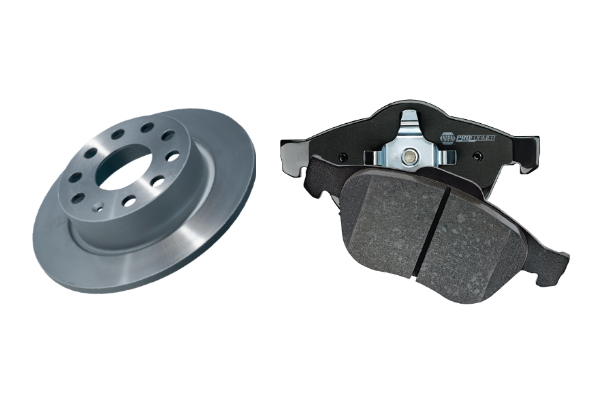
Corrosion and How It Affects Braking Systems
24 Aug 2020
Category:
Corrosion is a deterioration of metal or its properties caused by a reaction with the environment. The most common corrosion within the industry is the formation of rust on metal surfaces which occur when exposed to oxygen and moisture. Corrosion can be a dangerous and often costly problem and in automotive applications, it can be aggressive due to high pollution levels, the weather and exposure to de-icing salts.
CAST IRON – ADVANTAGES AND DISADVANTAGES
In braking, several components are made from cast iron as it is essential for safe and efficient braking due to its friction properties, its resistance to distortion and its durability. However, cast iron is also highly corrosive and this disadvantage often receives criticism from customers for being poor quality.
CORROSION
Brake discs will corrode faster in humid areas and can be easily resolved by applying the brakes during a journey to clear surface corrosion. NAPA protect the brake disc against corrosion by using a protective coating on the disc edges and the hub to match OE quality. No coating is used on the friction surface as it can contaminate the pads and result in noise.
Corrosion becomes a bigger issue when vehicles are left stationary for long periods of time in an area that has more than 80% relative humidity. If brake discs become corroded on the surface, braking efficiency will decrease and noise, vibration and harshness (NVH) levels can increase. In more extreme cases, corrosion adhesion can occur between the brake disc and pad that can cause severe damage.
Corroded backing plates on brake pads can cause delamination of the friction material, leading to the detachment of the friction material from the backing plate, a loss of braking efficiency/stability and/or NVH. To protect brake pads, NAPA coats the backing plate with an anti-corrosion layer during the manufacturing process, which if remove could make it more susceptible to corrosion.
LUBRICATION
Components surrounding pads and discs can also become corroded and must also be treated to increase their longevity. Free movement is also essential for effective braking and therefore, contact points that are susceptible to corrosion must be lubricated. The lubricant used must not contain metals (to avoid any restrictions to movement) and must be able to withstand high temperatures.
CLEANING
Certain cleaning methods and detergents can accelerate corrosion within the components. For example, pressure washing can push acidic detergents and moisture into tight crevices between the brake disc and hub, causing corrosion build up and misalignment of the disc, leading to NVH. At the point of installation, it is best practice to clean the hub surface and protect it with a suitable lubricant to help prevent corrosion build-up.
Pressure washers can also detach caliper slider boots, leading to moisture and corrosion. These must be removed, inspected, cleaned/replaced and protected with a water-repelling lubricant that is compatible with rubber boots.
NAPA READY AFTER PRODUCTIVE TESTING
Defending champions NAPA Racing UK are set for the opening rounds of the new Kwik...
Read More3 More Years
NAPA Racing UK re-affirms BTCC commitment with extended Alliance Racing deal The NAPA Racing UK...
Read MoreHIGH FIVE IN HISTORIC BTRC OPENER
HIGH FIVE FOR NAPA RACING UK IN HISTORIC BTRC OPENER NAPA Racing UK enjoyed the...
Read More